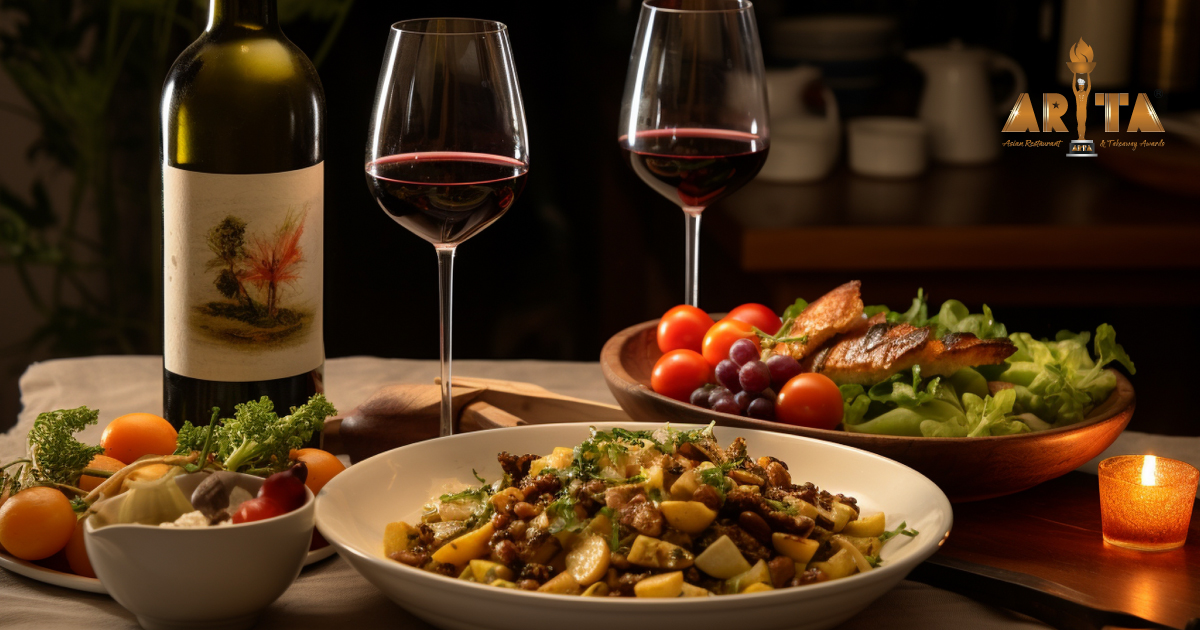When running a restaurant, it’s crucial to think about the entire dining experience. Guests might come for your delicious meals or signature drinks, but what about those who come for both? Pairing food with drinks may seem like a small detail, but it can make a big difference.
Imagine creating amazing wine pairings that elevate your dishes to a whole new level. Pairing drinks with your food allows your guests to try something new and enjoy the perfect combination of flavours. It’s a simple yet powerful way to make your restaurant stand out and give your guests a memorable experience they’ll want to return to.
If you find it challenging to speak in front of your customers, we are here to help. Throughout this article, we will help you match the right food with the right wine.
Wine & Food Pairing Menu Ideas
The following are some pairing ideas that have been tried and tasted. These pairings are so good that they will surely make your guests ask for more. Whether you’re offering the wines with the appetisers or desserts, the matches will definitely drive wine sales.
Pairing with Appetiser
When it comes to pairing appetisers with wine, try to serve something light. The following ideas will help you get started.
- Sparkling wine: Salty snacks like chips, french fries, and caviar.
- Chardonnay: It goes well with grilled shrimp and quesadillas.
- Cabernet Sauvignon: Serve it with meatballs and beef sliders.
- Sauvignon blanc: Suggest it when customers order sides like guacamole, salsa, or grilled asparagus.
- Riesling: Perfect match for spicy dishes like chicken wings or jalapeno peppers.
- Sangiovese: A great suggestion for meatballs, grilled chicken skewers, and pizza bites.
- Syrah: Pair well with portobello mushrooms, bacon-wrapped dates, and grilled eggplant.
Pairing With Cheese
Wine and cheese – an iconic pair that undoubtedly makes a great start to any meal. That’s why you must know which wine to offer with which cheese, whether your guests are ordering a charcuterie board or just a cheese plate. Here are some suggestions to help you:
- Chardonnay – Goat cheese, havarti, brie, gruyere, parmesan and provolone
- Moscatos – Gorgonzola, ricotta, feta, camembert, brie, and mozzarella
- Sauvignon blanc – Goat cheese, asiago, brie, feta and parmesan
- Pinot grigio – Asiago, aged cheddars, goat cheese, mozzarella and gouda
- Riesling – Gouda, brie, Monterey Jack, Colby, and blue
- Rose – Havarti, burrata, gouda and chevre
- Champagne or sparkling wine – Parmesan, brie, gruyere, and havarti
- Malbec – Cheddars, Colby, and edam.
- Port – Romano, blue, gorgonzola, cheddars and gouda
- Merlot – Parmesan, Swiss, Havarti, cheddars, and gouda
- Pinot noir – Camembert, blue, gruyere, muenster and swiss
- Cabernet sauvignon – Gorgonzola, blue, cheddar, Colby and gouda
- Zinfandel – Gouda, asiago, gruyere, feta and goat cheese
Pairing with Dessert
Who loves dessert after a delicious meal? Almost everyone. While you’re running a restaurant and designing its menu, you must learn how to pair wine and cheese to ensure an unforgettable journey for your guests. The following tips will help you get the perfect pairing every time.
- Chocolates and Caramels: Pair them with Portuguese port, Pinot Noir, or dry red wines like a ruby port. Their rich flavours complement the sweetness perfectly.
- Vanilla and Custards: For creamy desserts like tiramisu and panna cotta, serve muscats, Sauternes, Rieslings, or roses. These wines enhance the delicate flavours of these desserts.
- Fruity and Spicy Desserts: Citrus, spicy, and slightly sweet desserts pair wonderfully with Riesling and Gewürztraminer. Suggest a sweet rose, Prosecco, Sauternes, or a sparkling rose for berry-based treats to bring out the fruity notes.
General Tip: Always suggest a wine that is sweeter than the dessert your customers ordered to ensure a harmonious pairing.
Wine & Food Pairing Tips
If you have ever looked into those restaurants that have won renowned restaurant awards like the Asian Restaurant & Takeaway Awards (ARTA), you will see that they don’t stop just by serving delicious meals; rather create a memorable dining experience for the customers. By ensuring every meal is complemented by the perfect wine, you can create the same experience for your guests.
Besides, instead of just following the abovementioned pairing ideas, we want you to feel confident creating your own food and wine pairings. Whether you’re a waiter or a restaurant owner, these tips will help you build an incredible menu.
Flavour Intensity: Each food and wine has its own flavour intensity. The goal is to balance them so one doesn’t overpower the other. Pair rich foods with rich wines and mild foods with mild wines.
Acidity: Some foods are more acidic than others. In such cases, choose a slightly more acidic wine than the food to complement it perfectly.
Weight of the Food: When selecting a wine, consider the weight of the food. This isn’t about flavour but the heaviness of the dish. For example, pasta might have a lighter flavour but is heavier than some seafood dishes or a salad. Match the weight of the food with the weight of the wine.
Sauce Over Meat: Focus on pairing the wine with the sauce rather than the meat. The sauce often provides the dominant flavour, so matching the wine to the sauce will enhance the overall taste experience.
Dominant Flavours: Always consider the dominant flavours in a dish. Pair the wine with the strongest flavour, which will stand out most to customers.
Don’t Overthink: Don’t stress too much about finding the perfect pairing. By following these tips and using our food and wine pairing ideas, you’ll easily be able to recommend the right bottle.
Final Thoughts
Creating a truly unique wine and food pairing at your restaurant can be the key to standing out from the competition. Guests visit your restaurant for many reasons: the delicious food, the refreshing drinks, the inviting atmosphere, and the friendly staff.
By crafting the perfect combinations and ensuring your staff are well-trained, you show your customers that you prioritise quality, taste, and a genuine love for food. This attention to detail can make all the difference in setting your restaurant apart.





